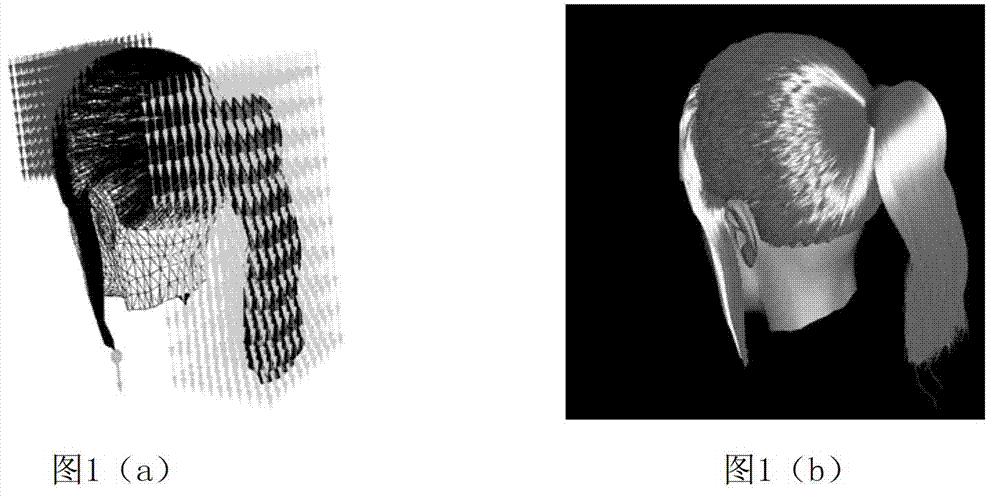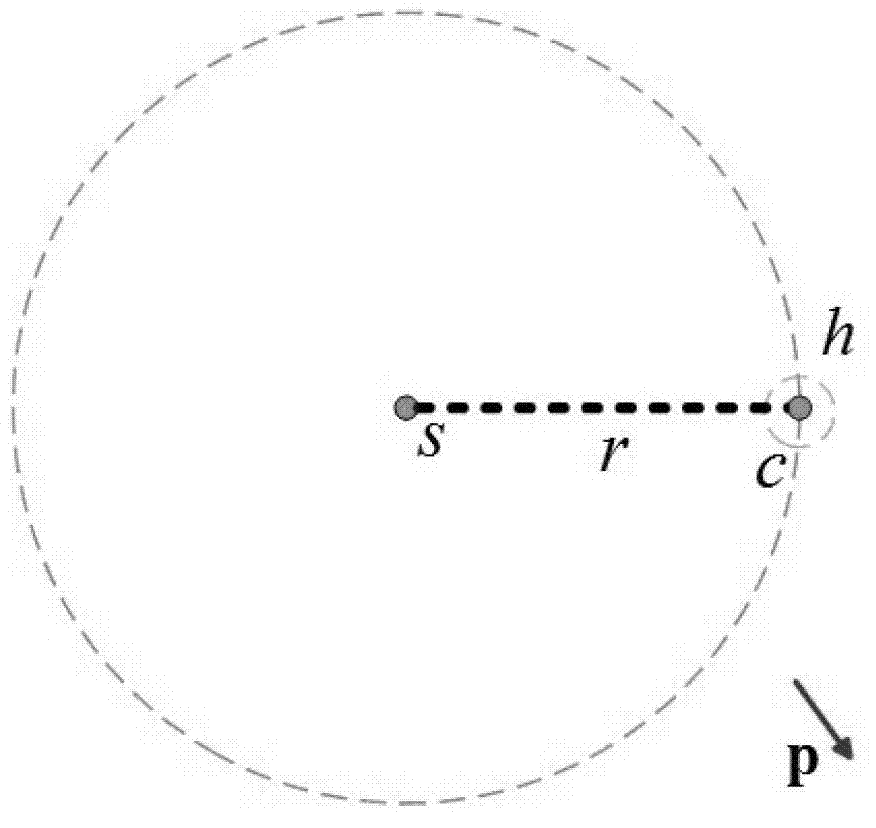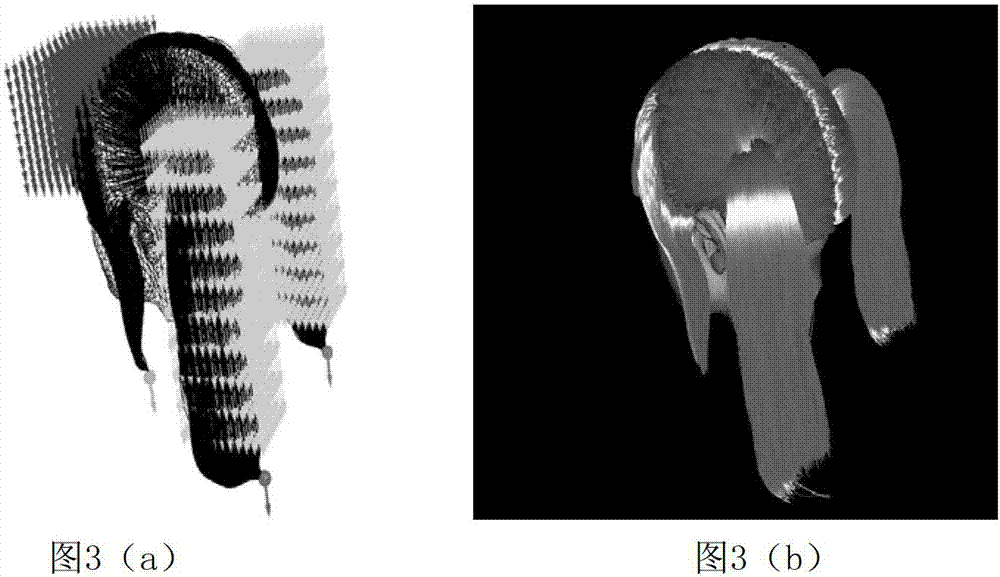Hair model modeling method
A model modeling and hairstyle technology, applied in the field of realistic hair hairstyle modeling based on reusable hairstyle constraints, can solve problems such as performance impact, loss of hairstyle details, and hair feature distortion
- Summary
- Abstract
- Description
- Claims
- Application Information
AI Technical Summary
Problems solved by technology
Method used
Image
Examples
Embodiment 1
[0133] This example is generated using the following method figure 1 Shown ponytail hairstyles:
[0134] Step 1: According to the overall shape of the overall hairstyle to be generated, the hair growth area, that is, the scalp grid is specified on the target avatar model; the scalp grid parameter domain A of the target avatar model is established on the scalp grid by using the grid parameterization method;
[0135] Step 2, generate the two-dimensional distribution of Q root sample hairs:
[0136] (1) Generate a two-dimensional distribution of global hair on the scalp grid parameter domain A, and map the result to the scalp grid of the target avatar model;
[0137] (2) Use the K-means clustering method to evenly divide the two-dimensional distribution of global hair on the scalp grid parameter domain A into Q clusters, and use Q root sample hairs to represent the overall hair shape of the hair cluster. The hair roots of the sample hairs are all located in the cluster center o...
Embodiment 2
[0164] This embodiment adopts the method of embodiment 1 to generate image 3 The ponytail hairstyle shown. image 3 (a) and image 3 (b) Indicates the construction of the "double ponytail", which divides the main part of the scalp mesh into two regions, and applies a cluster constraint domain respectively, so that the hair strands in each region face different "gathering" directions Grow, then apply an equidistant constraint domain in the vertical direction to the scatter-corrected hair strands, simulating the effect of gravity. Other parts, such as the part of staying in the sea, also apply the cluster constraint domain and equidistant constraint domain.
Embodiment 3
[0166] Method According to the overall hairstyle characteristics of the overall hairstyle to be generated, Q sample hair strands are respectively generated, and the natural deformation effect processing of the Q root sample hair strands is completed according to the natural deformation characteristics of the overall hairstyle to be generated, and then the Q root sample hair strands are used to The hair strands respectively represent the shape of their respective hair clusters, and the remaining hair strands in their respective hair clusters are generated according to the interpolation of each sample hair strand, so as to generate the overall hairstyle on the target avatar model. Follow the steps below:
[0167] Step (1), performing step 1 of the method described in Embodiment 1;
[0168] Step (2), performing steps 2 to 3 of the method described in Example 1;
[0169] Step (3), execute step 4 in the method of embodiment 1;
[0170] Step (4), on the basis of the collection of s...
PUM
 Login to View More
Login to View More Abstract
Description
Claims
Application Information
 Login to View More
Login to View More - R&D
- Intellectual Property
- Life Sciences
- Materials
- Tech Scout
- Unparalleled Data Quality
- Higher Quality Content
- 60% Fewer Hallucinations
Browse by: Latest US Patents, China's latest patents, Technical Efficacy Thesaurus, Application Domain, Technology Topic, Popular Technical Reports.
© 2025 PatSnap. All rights reserved.Legal|Privacy policy|Modern Slavery Act Transparency Statement|Sitemap|About US| Contact US: help@patsnap.com



